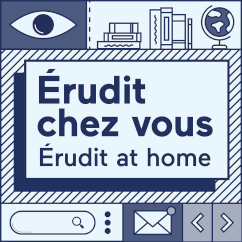Technological advances, the Internet, and social media have all ushered in an era of exponential increases in data production and so, too, a flourishing of digital cultural heritage. As Fiona R. Cameron states in The Future of Digital Data, Heritage and Curation in a More-than-Human World, “Our very existence has become datafied. Digital data is omnipresent in what we do and how we experience life: how we record our lives, how we spend our leisure time, how we conduct our work and love lives” (p. 2). This bottomless sea of digital information is the backdrop and impetus for Cameron’s latest contribution to the cultural heritage field. In this book, Cameron, who is an associate professor at Western Sydney University, brings her expertise in critical museum studies, digital cultural heritage, environmental post-humanities, and climate change to bear on ideas of curating and collecting digital heritage now and in the future. Throughout, she problematizes all that constitutes this specific type of heritage. Using contemporary examples – including archives professionals’ bugbears like Trump’s prolific tweets – she critiques the prevailing trends in digital heritage and our traditional ideas of objecthood (p. 2). Though the text gives little concrete direction on the practicalities of preserving digitized and born-digital heritage records, and the prose can be dense, the patient reader will nonetheless find that Cameron’s philosophical treatment of a complicated topic is laudably current, technologically informed, and ecologically and socially minded. This book is nine chapters in length, including the introduction and conclusion. Cameron starts by framing the monograph’s topics and theoretical underpinnings. Early in the text, she defines digital cultural heritage (DCH) as “all digital data that a society sees as of enduring value that is important enough to retain, keep, preserve and pass on to future generations” (p. 27). She goes on in chapter 2 to explain its history and its eventual acceptance as official heritage by UNESCO in 2003. Cameron also brings up further UNESCO conferences that have continued to grapple with and refine the organization’s understanding of this “intangible” heritage (p. 34). Her portrayal of UNESCO is not a glowing one, however; she critiques the organization’s approach to DCH preservation in this chapter and throughout the text. She takes issue with its Western-centric focus, and she refutes its propensity to freeze digital heritage data as “forms of information and cultural expression” that are fixed in time rather than evolving and fluid (p. 46). In chapter 3, she levels this same critique at the whole modern heritage sector. She writes, “The desire to fix and quarantine data in such a way is a distinctly heritage disposition” (p. 79). In short, Cameron is challenging heritage and information professionals to view the whole lifespan of a digital object’s use and reuse as part of its cultural value. This challenge is an important throughline in her text. Chapter 4 takes a step back from this critique about how the heritage sector treats digital objects to consider more generally the concept of the object, or objecthood, and its application in DCH. Cameron explores ideas of objecthood through a series of examples. The most compelling of these is the whole apparatus of tangible and intangible technical objects that made up the patented system through which the late scientist Stephen Hawking functioned and communicated (as he suffered from motor neuron disease). She talks about the wide range and types of objects encapsulated in that system: “All of these objects collectively as heritage are representative of Hawking’s genius, of technological innovation and therefore representative of his life at particular historical moments” (p. 116). Through this example, Cameron is …
The Future of Digital Data, Heritage and Curation in a More-than-Human World. Fiona R. Cameron. Abingdon, UK: Routledge, 2021. xii, 301 pp. 9780367711641
…more information
Beth Richert
University of Wisconsin–Madison
Access to this article is restricted to subscribers. Only the first 600 words of this article will be displayed.
Access options:
Institutional access. If you are a member of one of Érudit's 1,200 library subscribers or partners (university and college libraries, public libraries, research centers, etc.), you can log in through your library's digital resource portal. If your institution is not a subscriber, you can let them know that you are interested in Érudit and this journal by clicking on the "Access options" button.
Individual access. Some journals offer individual digital subscriptions. Log in if you already have a subscription or click on the “Access options” button for details about individual subscriptions.
As part of Érudit's commitment to open access, only the most recent issues of this journal are restricted. All of its archives can be freely consulted on the platform.
Access options

